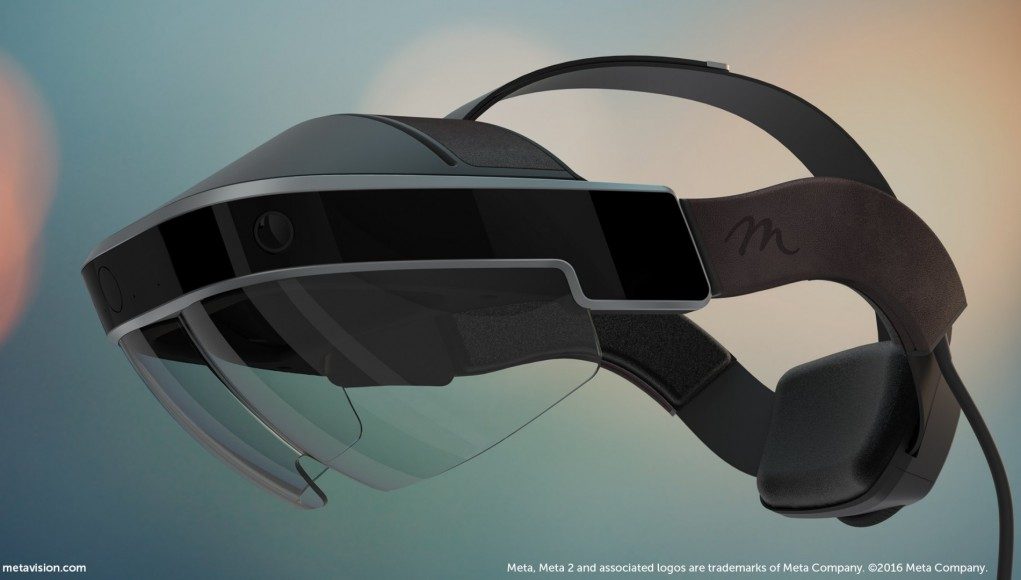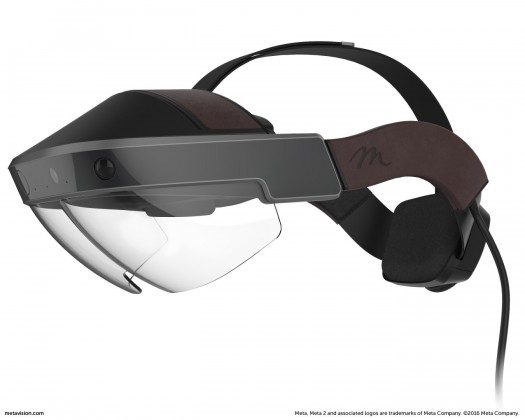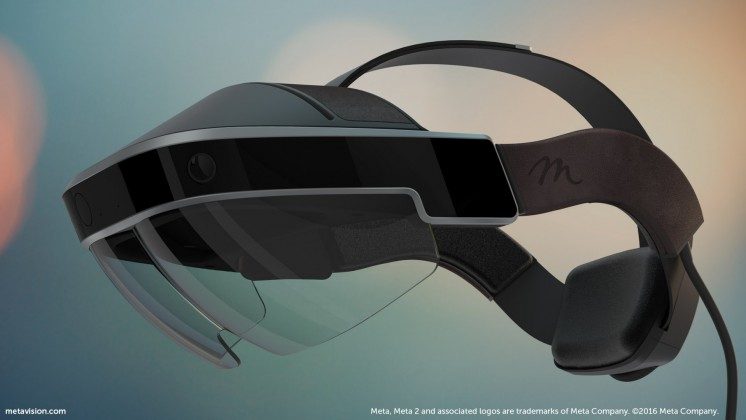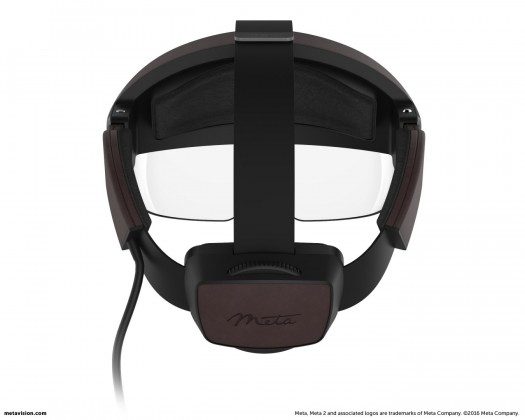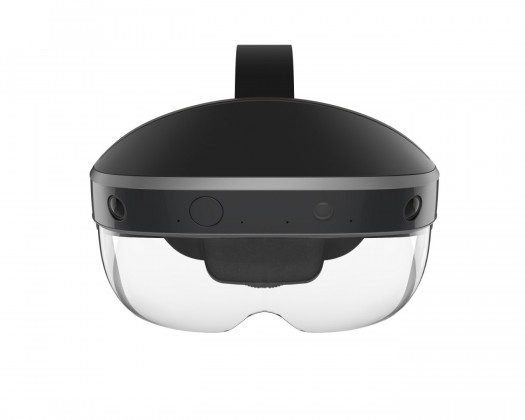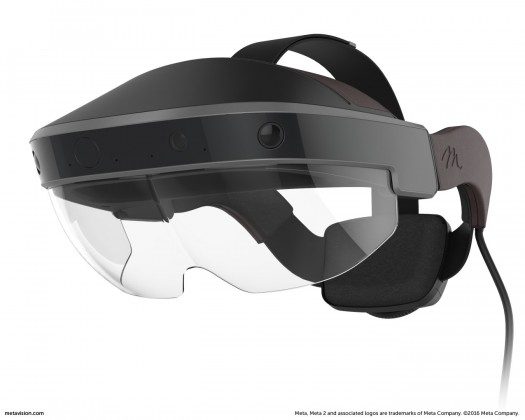Meta have today opened up pre-orders for their ‘Meta 2’ augmented reality development kit glasses today and have revealed the specifications for the units as well as the price.
Meta broke out of stealth mode last month when they appeared at the prestigious TED conference to demonstrate their augmented reality visor for the first time, live and on stage. The device, which bears more than a striking resemblance to Microsoft’s HoloLens, claims to provide AR projections through a transparent visor, anchored in the real world using their computer vision based, inside out tracking solution. The practical upshot is, you can overlay computer generated imagery on the real world, potentially transforming your physical space into a digital space.
Today, in an effort to stimulate support from software developers, Meta are launching pre-orders for the Meta 2. If you want ‘in’ on creating applications for Meta’s platform, you’ll need to shell out $949 for the new glasses – for that you’ll receive a headset sporting a resolution of 2560 x 1440 with a claimed diagonal field of view of 90 degrees – 20 pixels per degree. The headset includes a 720p front-facing camera as well as inertial IMUs to assist with tracking head position and movement. In addition, the Meta 2 includes ‘four speaker near-ear’ audio.
The FOV is something Meta are playing up, in particularly in comparison to HoloLens, which presents the augmented world through a relatively small window – a trait which has disappointed some who have tried the unit. Measuring field of view is as yet a contested science, or at least one without a common, agreed standard. However, if Meta’s claims are comparable, the new development kit is approaching Gear VR for visual immersion. The big difference between the Meta 2 and HoloLens however is that Meta 2 is a tethered device, requiring a PC connection to work whereas HoloLens is a standalone, untethered device with all processing and rendering handled by onboard systems.
The display is stereoscopic, and bounces an image for each eye from the display off the transparent visor in front of your eyes – creating the illusion of digital objects in the real world. So the per-eye resolution of the Meta is again, comparable to Gear VR running with Samsung Galaxy S6 or S7 smartphones with a similar resolution displays.
All of this neat visual trickery is great, but you need users to interact with their digital AR worlds. So, Meta is making much of its intuitive “direct hand interaction”, the company claim “you are the operating system,” which means Meta plan to allow you to grab digital projections as well as point and ‘air touch’ your way around interfaces – all captured using an onboard (but undefined) ‘sensor array’. The videos released today show some examples of this in action, and it certainly seems to work – albeit requiring very slow, deliberate actions on the part of the user. But then, this is still in development.
The SDK Meta will provide developers has had, so Meta claims, input from over 1000 companies working with them through the company’s first Kickstarter funded prototypes shipped to developers in January of last year. The company sees the Meta as a device that may “fundamentally change the way people collaborate,” with claimed application development spanning multiple industries.
Road to VR went hands on with the latest Meta 2 device recently and we’ll have a full report on this shortly. In the mean time, if you’re interested in getting hold of a pair of Meta 2 glasses, head over to the company’s website here.

